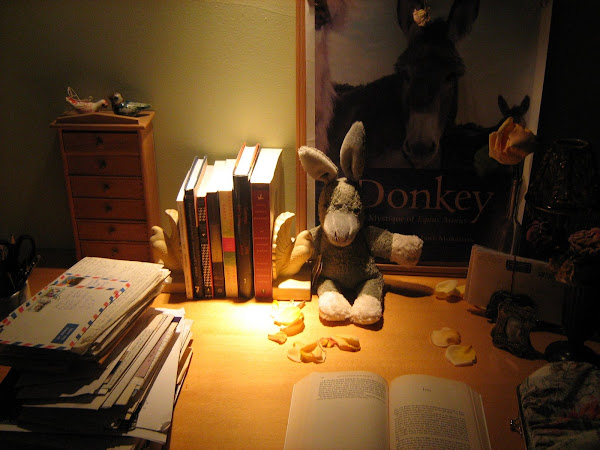The New York Times Magazine recently ran a fascinating article about the group of teenage girls in upstate New York who succumbed, en masse, to a set of mysterious symptoms—such as twitching and spasming—for which no satisfactory biological explanation can be found. One girl was afflicted with the symptoms, then another and another, until the affliction has spread fairly widely throughout the school. Many of the sufferers are cheerleaders. The story has attracted much national attention, and the incidence of the symptoms seems to rise and fall with the level of media scrutiny. After ruling out environmental explanations, some experts have concluded that the girls are suffering from conversion disorder—commonly called mass hysteria. But perhaps understandably, many of the victims and their families are resistant to this diagnosis, in part because it sounds like an accusation that the girls are faking their symptoms—and their symptoms, it turns out, are pretty hard to fake.
 Reading this piece reminded me of an amazing book I read a couple of years ago called Crazy Like Us: The Globalization of the American Psyche by Ethan Watters. In it, Watters argues that mental illness, unlike physical illness, manifests itself in culturally distinct ways. In different cultures, different symptoms are scanned as reflective of psychic pain—and thus, in different cultures different symptoms of psychic pain appear. Watters argues for a more culturally aware approach toward global mental health, raising the interesting example of schizophrenia—understood as the product of malfunctioning brains in the West, and of demonic possession in certain African cultures. In those cultures, because the problem is understood as external to the individual, schizophrenics are more accepted and well-integrated into their families during periods of wellness and calm. Watters also discusses the case of anorexia, which is widely and popularly believed to be a function of the Western media’s obsession with image and emphasis on thinness. But he raises the point that when anorexia first emerged as a set of symptoms it was not often accompanied by the body dysmorphia we often believe to be its hallmark today—it usually afflicted a young woman on the heels of a romantic heartbreak, and first presented as vague stomach problems and an inability to eat. A similar disorder is arising among young women in Hong Kong, where the disease is not understood—at least not by its sufferers—as a pursuit of thinness, but is in fact experienced as a sensation of chronic stomach discomfort or fullness.
Reading this piece reminded me of an amazing book I read a couple of years ago called Crazy Like Us: The Globalization of the American Psyche by Ethan Watters. In it, Watters argues that mental illness, unlike physical illness, manifests itself in culturally distinct ways. In different cultures, different symptoms are scanned as reflective of psychic pain—and thus, in different cultures different symptoms of psychic pain appear. Watters argues for a more culturally aware approach toward global mental health, raising the interesting example of schizophrenia—understood as the product of malfunctioning brains in the West, and of demonic possession in certain African cultures. In those cultures, because the problem is understood as external to the individual, schizophrenics are more accepted and well-integrated into their families during periods of wellness and calm. Watters also discusses the case of anorexia, which is widely and popularly believed to be a function of the Western media’s obsession with image and emphasis on thinness. But he raises the point that when anorexia first emerged as a set of symptoms it was not often accompanied by the body dysmorphia we often believe to be its hallmark today—it usually afflicted a young woman on the heels of a romantic heartbreak, and first presented as vague stomach problems and an inability to eat. A similar disorder is arising among young women in Hong Kong, where the disease is not understood—at least not by its sufferers—as a pursuit of thinness, but is in fact experienced as a sensation of chronic stomach discomfort or fullness.
I was reminded of all of this while reading the article about the cheerleaders in upstate New York. When no external and organic explanation for the girls’ symptoms was found, sufferers were understandably hesitant to accept the diagnosis of conversion disorder—feeling that this was, on some level, an implication that their disease was not real. Crazy Like Us gives us another way of understanding their symptoms: as a culturally influenced manifestation of an underlying, and very real, psychic issue. It shouldn’t surprise us that symptoms of mental distress are variable across culture and history, or that certain mental symptoms can be unusual, transitory, or even, on some level, ‘contagious.’ After all, the brain is in constant dialogue with the culture around it, which makes diagnosing and caring for it an even stranger project than caring for our bodies. My mother tells the incredible story of how, as a young candy striper volunteering in a V.A. hospital, she roused a catatonic patient from his stupor by offering him a glass of what she thought was apple juice—it was, in fact, his urine sample. His vigorous head shaking was his first movement in months, and he subsequently made a dramatic and full recovery. Though for some reason, this never made it into the medical protocol.

No comments:
Post a Comment